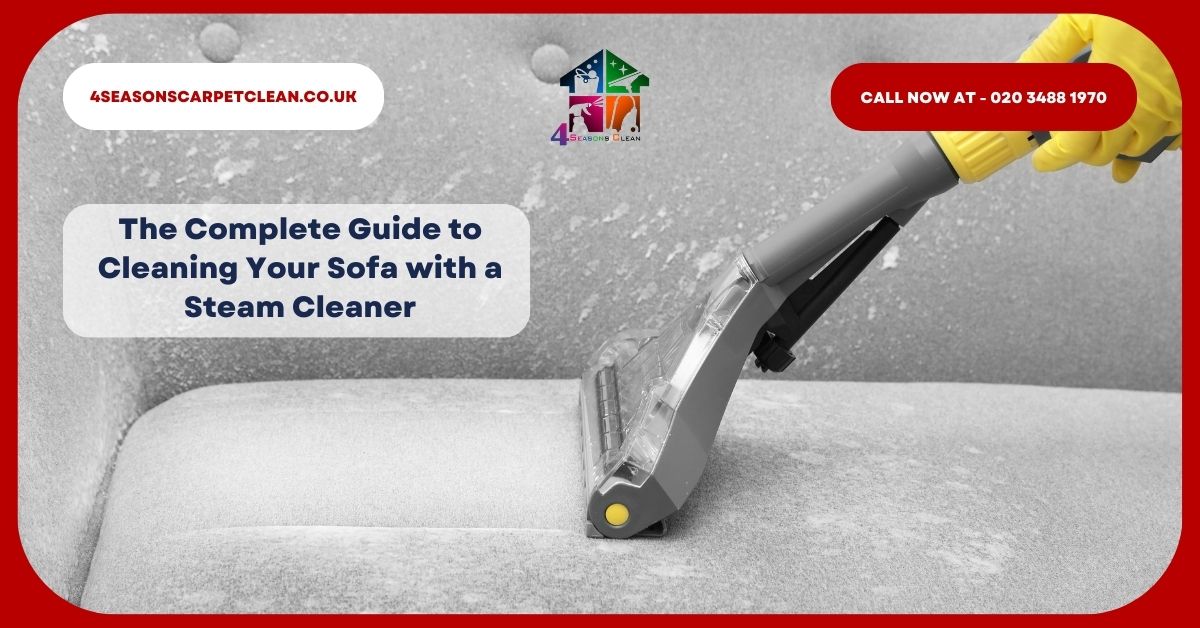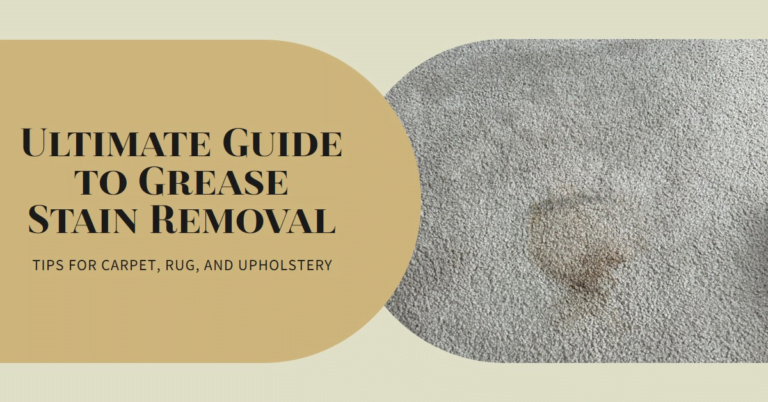A sofa is more than just a piece of furniture—it’s the heart of your living space, a gathering spot for family, friends, and pets. With daily use, it’s no surprise that sofas can quickly accumulate dust, stains, allergens, and odors. While regular vacuuming and spot cleaning help, nothing revitalizes a sofa quite like a deep steam clean. In this comprehensive guide, you’ll learn why steam cleaning is so effective, how to do it safely and thoroughly, and how to keep your sofa looking fresh for years to come.
Why Steam Clean Your Sofa?
Steam cleaning is a powerful, eco-friendly way to deep clean upholstery. Here’s why it’s a favorite among homeowners and professionals:
- Deep Cleans and Sanitizes: The high temperature of the steam penetrates fabric fibers, loosening embedded dirt, dust mites, and allergens. It also kills bacteria, viruses, and mold spores, making your home healthier—especially important for allergy sufferers or households with pets and children.
- Removes Stubborn Stains and Odors: Steam helps dissolve tough stains and neutralizes odors without harsh chemicals, restoring your sofa’s appearance and freshness.
- Eco-Friendly: Steam cleaning uses mostly water, reducing the need for chemical cleaners that can be harmful to your family and the environment.
- Versatile: Suitable for many types of upholstery, steam cleaning can be used on sofas, armchairs, mattresses, curtains, and more.
Before You Begin: Is Your Sofa Safe for Steam Cleaning?
Not all sofas are created equal. Before reaching for your steam cleaner, check the care label on your sofa—usually found under the cushions or on the frame. Here’s what the codes mean:
| Code | Meaning | Steam Cleaning? |
| W | Water-based cleaners only | Yes |
| WS | Water or solvent-based cleaners | Yes |
| S | Solvent-based cleaners only | No |
| X | Vacuum only, no cleaners | No |
If your sofa lacks a label, test the steam cleaner on a small, hidden area first to check for colorfastness or fabric damage.
Avoid steam cleaning:
- Silk, velvet, and genuine leather (risk of shrinking, warping, or discoloration)
- Down-filled cushions (risk of clumping and mold)
- Any upholstery labeled “S” or “X”

What You’ll Need
- Steam cleaner with upholstery attachment
- Distilled water (prevents mineral buildup)
- Vacuum cleaner with upholstery tool
- Microfiber cloths or towels
- Mild detergent or upholstery cleaner (for pre-treating stains)
- Soft brush (optional)
- Fan or open windows (for drying)
Step-by-Step: How to Steam Clean Your Sofa
1. Preparation: Vacuum Thoroughly
Start by vacuuming the entire sofa, including under cushions and in crevices. This removes loose dirt, dust, pet hair, and crumbs, preventing them from turning into muddy streaks when steamed.
2. Spot Test and Pre-Treat Stains
- Spot Test: Always test your steam cleaner on a hidden area to ensure the fabric doesn’t react poorly to heat or moisture.
- Pre-Treat Stains: For stubborn spots, blot (don’t rub) with a mild detergent or a mix of water and vinegar. Let it sit for a few minutes, then blot with a clean cloth. For dried stains, gently brush with a soft brush before vacuuming.
3. Set Up the Steam Cleaner
- Fill the tank with distilled water (and a small amount of upholstery cleaner if recommended by your machine’s instructions).
- Attach the upholstery tool.
- Allow the machine to heat up fully.
4. Steam Clean the Sofa
- Start at the top and work your way down to prevent dirty water from dripping onto clean areas.
- Hold the nozzle 2–3 inches from the fabric, using slow, overlapping strokes in a grid pattern for even coverage.
- Use short bursts of steam to avoid over-saturating the fabric. After each pass, wipe the area with a microfiber cloth to absorb dirt and excess moisture.
- Pay extra attention to high-traffic areas and stains, but don’t linger too long in one spot to prevent water damage.
5. Dry the Sofa Completely
- Allow your sofa to air dry fully before using it again. Open windows or use fans to speed up the process and prevent mold or mildew.
- Check for damp spots before replacing cushions or sitting down. Drying can take several hours to a full day, depending on humidity and fabric thickness.

Aftercare: Keeping Your Sofa Fresh
- Regular Vacuuming: Vacuum weekly to prevent dust and debris from settling deep into the fabric.
- Spot Clean Spills Immediately: Blot spills as soon as they occur to prevent stains from setting.
- Rotate Cushions: Flipping and rotating cushions helps distribute wear evenly and maintain shape.
- Apply Fabric Protector: After cleaning, consider using a fabric protector spray to guard against future stains.
- Use Sofa Covers: Removable, washable covers can help keep your sofa clean between deep cleans.
- Schedule Professional Cleaning: Even with regular care, a professional steam clean every 12–18 months can help extend your sofa’s life.
Common Mistakes to Avoid
- Skipping the Vacuum: Not vacuuming first can lead to dirt turning into muddy streaks.
- Over-Saturating the Fabric: Too much moisture can cause mold, mildew, and water stains.
- Not Spot Testing: Always test a hidden area to avoid damage or discoloration.
- Using Steam on Delicate Fabrics: Avoid steam cleaning silk, velvet, leather, or down-filled sofas.
- Not Allowing Proper Drying: Sitting on a damp sofa can lead to odors and fabric damage.
- Cleaning on Humid or Cold Days: Drying takes longer and increases the risk of mold—choose a warm, dry day if possible.
The Benefits of Steam Cleaning
- Healthier Home: Steam kills dust mites, bacteria, and allergens, improving indoor air quality.
- Eco-Friendly: Reduces reliance on chemical cleaners.
- Restores Appearance: Revives faded, stained, or dingy upholstery, making your sofa look and smell fresh.
- Cost-Effective: Regular steam cleaning can extend the life of your sofa, saving you money in the long run.
Frequently Asked Questions
Can I use a clothes steamer instead of a steam cleaner?
Yes, for small areas or delicate fabrics, a clothes steamer can be effective for refreshing and sanitizing upholstery—but it may not have the power for deep cleaning or stain removal.
How often should I steam clean my sofa?
For most households, a deep steam clean every 3–6 months is sufficient. High-traffic homes or those with pets and allergies may benefit from more frequent cleaning.
What if my sofa smells musty after steam cleaning?
Ensure it dries completely. Use fans, open windows, or a dehumidifier. Persistent odors may indicate the sofa was over-saturated or that mold has developed—consult a professional if needed.
Conclusion
Steam cleaning your sofa is one of the most effective ways to maintain a clean, healthy, and inviting living space. By following the right steps—checking fabric codes, vacuuming, pre-treating stains, using the steam cleaner correctly, and ensuring thorough drying—you can safely deep clean your sofa and enjoy its comfort for years to come. Regular maintenance and a bit of care will keep your sofa looking (and smelling) its best, making your home a fresher, healthier place for everyone.





